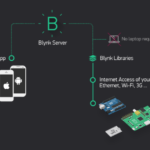The Phoenix E System is a next-generation satellite communications (SATCOM) system used by the U.S. Army, designed to replace the older Phoenix D system. This system is highly flexible and supports multi-band operations, allowing it to connect with various military and commercial satellites, making it adaptable for different mission needs.
It provides the U.S. Army with enhanced connectivity and communication capabilities like :
- Multi-Band Operations: The Phoenix E is capable of operating across multiple frequency bands, including the Super High Frequency (SHF) band. This flexibility allows it to connect to a wide range of military and commercial satellites, making it adaptable to different mission needs and environments.
- Interface with Modern Equipment: One of the key improvements in the Phoenix E is its ability to interface with Internet Protocol (IP) baseband equipment, something its predecessor, the Phoenix D, could not do. This capability allows for more advanced communication protocols and increased data throughput, enhancing the overall efficiency and effectiveness of military communication networks.
- Dual-Head Upgrade: The system features a dual-head capability, enabling it to access two satellites or frequency bands simultaneously. This feature increases the redundancy and reliability of the communication link, ensuring continuous operation even in challenging conditions.
- Deployment Flexibility: The Phoenix E is designed for ease of deployment. It is housed in transportable cases and can be operated from standard military vehicles or set up independently in the field. This design reduces the logistical burden and allows for rapid deployment and setup in various environments.
- Network Diversity and Robustness: The system uses advanced modems that support Frequency Division Multiple Access (FDMA) and Time Division Multiple Access (TDMA) Net-Centric Waveforms. These technologies enhance the system’s ability to handle multiple communication channels simultaneously, improving network diversity and robustness.
- Automated Configuration and Operation: In units like the 44th Expeditionary Signal Battalion-Enhanced, the Phoenix E system is fully automated, streamlining operations and reducing the need for manual intervention. This automation helps in quicker setup, operation, and maintenance of the system in the field.
Overall, the Phoenix E System is a critical upgrade to the Army’s SATCOM capabilities, providing more reliable, flexible, and higher-capacity communication links essential for modern military operations.
Sources :











